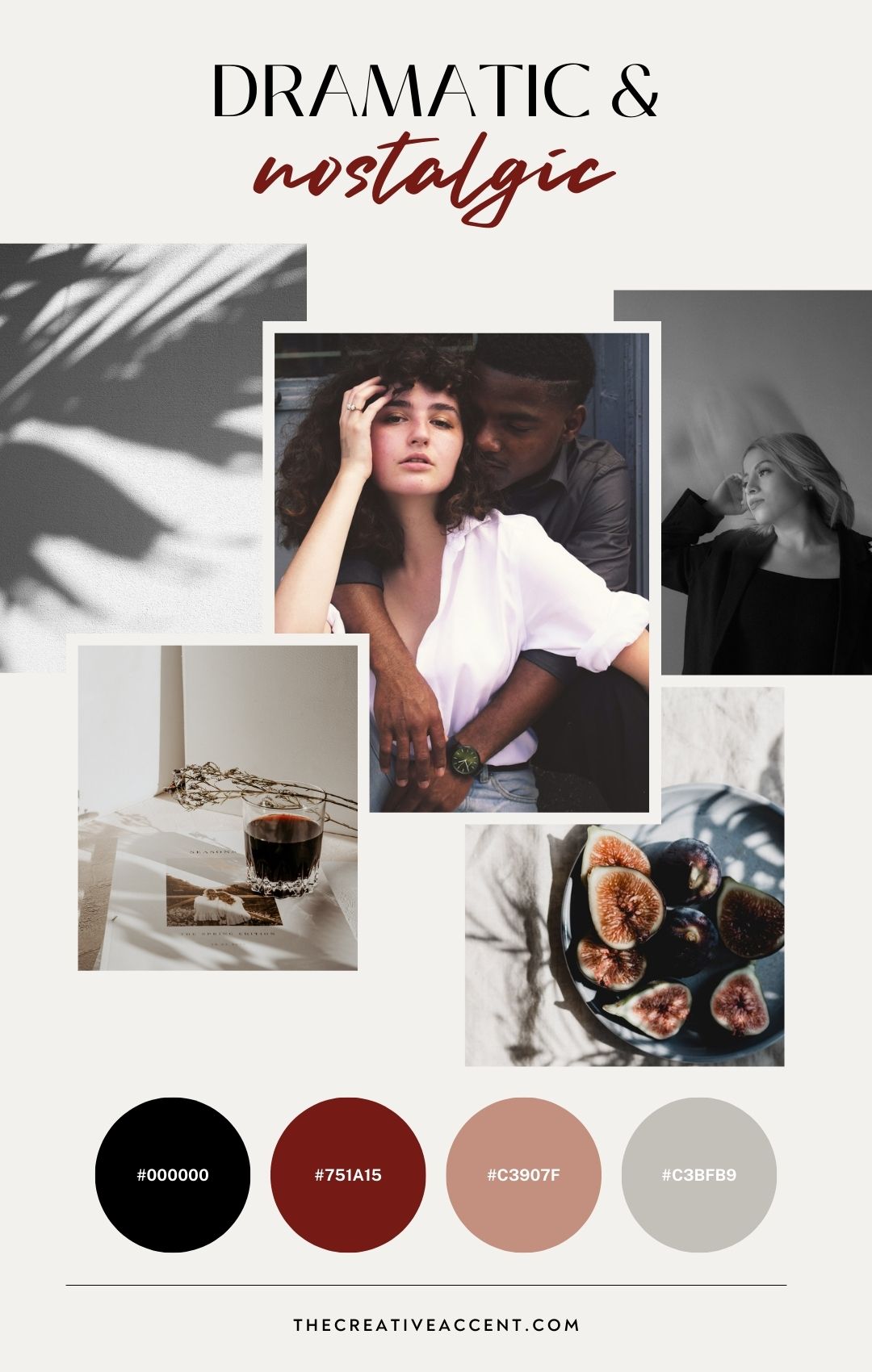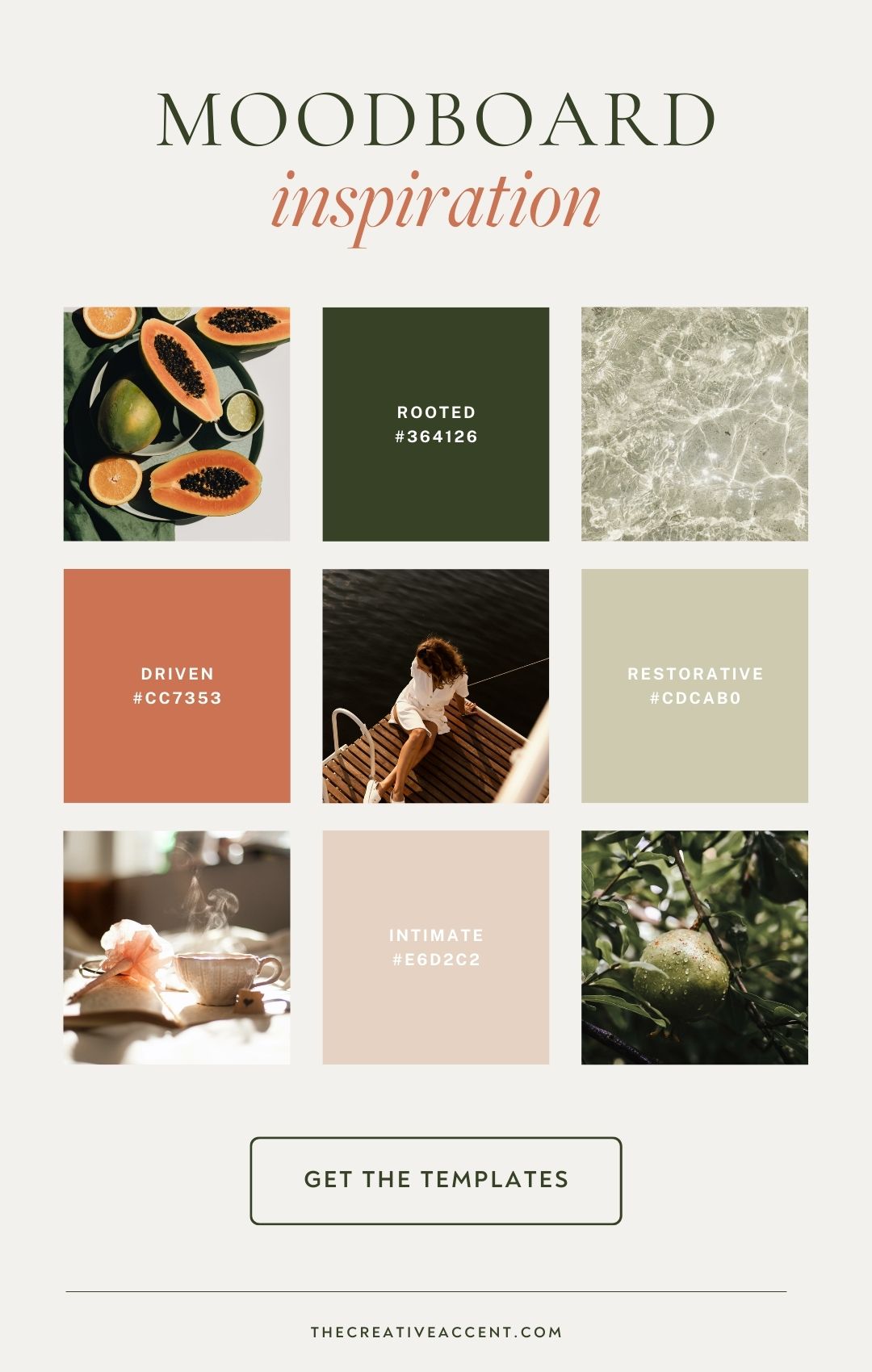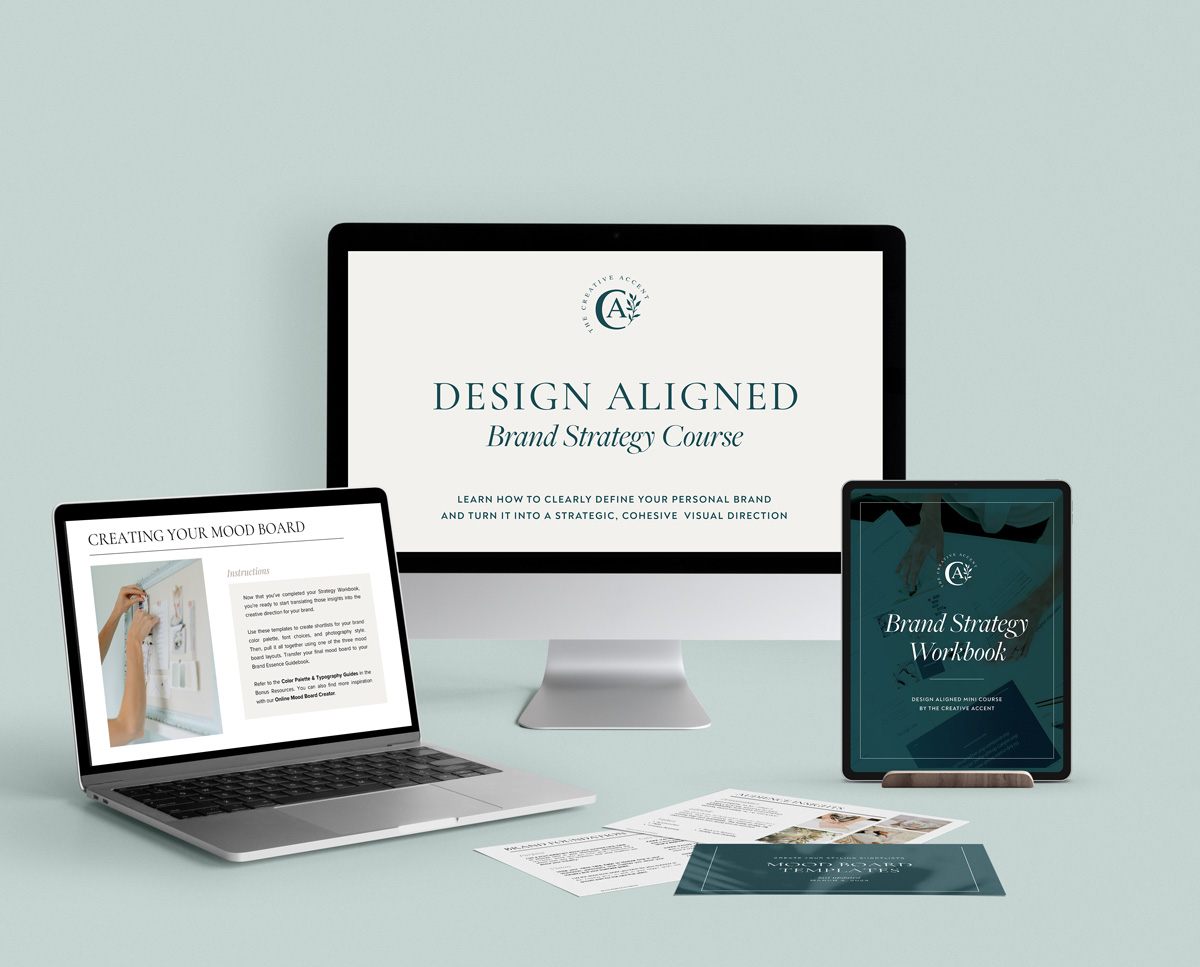Creating a mood board for branding is the bridge between strategy and the actual design.
Do you find yourself staring at a blank screen, struggling to bring the design ideas in your head into reality? or worse… You’ve got 187 tabs open and no clue how to organize what inspires you?
If you’re a small business owner who has weighed the different options for branding your business and decided on the DIY route, keep reading. This article covers the essential steps to create a mood board that brings clarity to your branding process.
Moodboarding can serve as a means for defining the creative direction, or “look and feel”, for many design projects, from branding and interior design to planning a wedding. An integral part of my brand design process, mood boards serve as the springboard from strategy to design.
First things first. What is a moodboard?
A mood board is simply a collage of photos, color swatches, textures, patterns, and typography. The order isn’t necessarily important, but these elements should capture the essence of your intended creative direction in terms of style and emotion. It needs to FEEL right as much as it is needs to LOOK appealing.
There are no “rules” here. You can source as few or as many elements as you wish to include on your mood board. However, the more you narrow down, the better. This will make design decisions easier and more streamlined.
How to create a branding mood board
The following gives you an inside look at my step-by-step process for putting together an intentional mood board design that defines the visual direction of my brand design clients. Over the years, this approach has not only enabled me to design strategic brands, but also helps my clients cut through the noise and better understand (and embrace!) the very essence of their business.
Step 1: Define your strategy
If your mood board is going to capture the vibe you want for your brand, your first step is to define what that vibe needs to be. Notice I say NEEDS and not WANTS. Your brand strategy extends way beyond personal preferences, even for personal brands.
This is undoubtedly the most important piece in the mood board puzzle. The look and feel of your brand is more than a reflection of your business. It’s also a reflection on the audience you serve and how you are positioning your business among your competitors.
Admittedly, this is often the step that trips small businesses owners up the most. Laying this important groundwork can be confusing and overwhelming without proper guidance.
That’s why I created Design Aligned – a mini brand strategy course that teaches DIY-enthusiasts like you how to clearly define their three essential pillars (Foundation, Audience, and Positioning) that fuel creative branding direction.

Step 2: Choose 3-4 keywords to guide your direction
With a clear strategy in place, go back through your notes and choose 3-4 keywords that are essential for your resulting brand identity to embody. These might pull from your core values, an aspect of your brand story, the transformation you deliver to your clients, and much, much more.
Start with a short list of 5-10, including synonymous words, and eventually narrow down to only 3-4. Then, use these keywords to create a mind map that expands on ideas and possible image concepts to include in your mood board. Start exploring possible brand color palettes that evoke emotions that align with your keywords (something I teach inside Design Aligned).
Step 3: Gather images for your branding mood board
Start broad. Gather images, color swatches, patterns – anything that inspires you and could possible align with your brand strategy. Assemble whatever you think has potential.
VERY IMPORTANT: Resist the urge to look at competitors during this time. If you did your strategy right, you’ll already have an idea of what your competitors are doing and how you plan to stand out. Now is the time to hone in on YOUR creative direction.
A few favorite places to source inspiring images for your branding mood board include:
- Unsplash and Pexels
- Canva Pro graphics
- Magazines
- Home decor & art
- Photos taken on city trips and visiting new places
Step 4: Assemble your mood board & start designing
Once your research is done, it’s time to narrow down. Cut out the photos, colors, etc. that aren’t 100% aligned with your keywords and overall strategy. This usually leaves me with 5-6 images and 3-4 main colors. Play around until you find the right combination.
Print out your mood board and keep it close as you start designing. This will help you make strategic decisions while choosing the right colors, fonts, and logo variations that resonate with your brand.
You can start by designing a physical mood board from printed images and cut outs from magazines, or design one online using a tool like Canva. In fact, grab my Canva Mood Board Templates to make the process even easier!

Lay the groundwork for your mood board with a clear strategy!
As you probably noticed from the steps outlined in this blog, defining your brand strategy is the ESSENTIAL first step to understanding how your brand should look and feel. In today’s competitive market, it takes more than a “pretty brand” to convert clients. It takes connection, authenticity, and daring to embrace the qualities that will truly enable your brand to stand out.
If working with a professional brand designer isn’t in the budget at this stage of your business, you can still DIY an intentional brand identity with the help of Design Aligned – my straightforward, no fluff brand strategy course that’s made for creative entrepreneurs like yourself.
